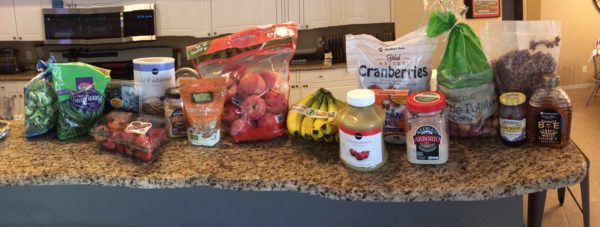
In my last article How to Starve Fat Cells I gave you a simple way to roughly calculate your carbohydrate needs based on calorie intake and activity level. To take it a step further, you should now make sure you’re choosing the appropriate types of carbohydrates for the time of day.
Check out the picture above- all are example sources of carbohydrates, but they differ greatly. The further right you go in the picture the more likely you’re feeding fat cells if you’re eating these carbohydrate items at the wrong times. Why is that? It’s because of the insulin response that happens when carbohydrates enter the bloodstream.
How quickly and how much insulin that is released into the bloodstream will be based on the type of carbohydrates eaten. Insulin is released into the bloodstream when you eat any carbohydrate whether it be a fibrous whole grain or straight table sugar. In general, you want to stick with low-moderate glycemic carbohydrates (<65GI) when trying to reduce body fat. You can see examples of low glycemic carbohydrates on the left side of the picture leading to more moderate glycemic carbohydrates in the center and then high glycemic carbohydrates (>65GI) on the right side.
We’re going to use the glycemic index (which rates various sources of carbohydrates based on how quickly they raise blood sugar levels) to properly time various carbohydrates in your diet. This will help to ensure you’re not sending any blood sugar to fat cells…remember- sugar and flour are the enemy when trying to reduce body fat.
Here’s a simple example of how to use the glycemic index to make good carbohydrate choices for reducing body fat (Remember that portion sizes will vary person to person based on calorie/carbohydrate needs):
Breakfast: A blend of low-moderate glycemic carbohydrates (30-65GI) to give some immediate energy and some sustained energy. (e.g Flour-less bread (Ezekiel bread) topped with low-sugar jam or oatmeal with coconut sugar and berries.
Post-workout: Moderate-high glycemic carbohydrates (65-90GI) to quickly replenish glycogen stores and expedite the healing/recovery process. (e.g. Banana, dried fruit, long-grain white rice, cereal, white pasta, or white potato)
Mid-day Meal(s): Low-moderate glycemic carbohydrates (30-65GI) to keep blood sugar levels steady for sustained energy without any significant raises in blood sugar. (e.g. sweet potato, long-grain brown rice, quinoa, vegetables, or apple)
Dinner Meal: Low glycemic carbohydrates (<45GI) to minimize any significant raise in blood sugar and keep glycogen stores the same. (e.g. green vegetables, leafy greens, barley, bran, and beans)
As you can see, you want to keep the moderate-higher glycemic carbohydrates around times when you’re the most active/exercising or when you’re somewhat fasted like at breakfast. Then, switch to low-moderate glycemic carbohydrates as you become less active and/or as it gets later in the day when you’ve already eaten numerous meals. This will ensure you’re not over loading your glycogen (carbohydrate) stores which will result in blood sugar being sent to fat cells.
Another quick tip is to make sure you’re having some kind of a plant-based fat with your meals (nuts/seeds, nut-butters, avocado, olive/coconut oil, etc…) This will help to slow down the absorption of sugar into the bloodstream, but remember to properly portion all your food items so that you’re staying in your calorie allotment for the day…none of this will do you any good of you’re eating too many calories!
Have a question or comment about this article or need help with custom meal planning? Email me at justin@check-yourself.com for more answers or to request a meal plan questionnaire to start eating towards your ideal physique!
Justin Check, NSCA-CPT, NESTA-FNC justin@check-yourself.com www.check-yourself.com
